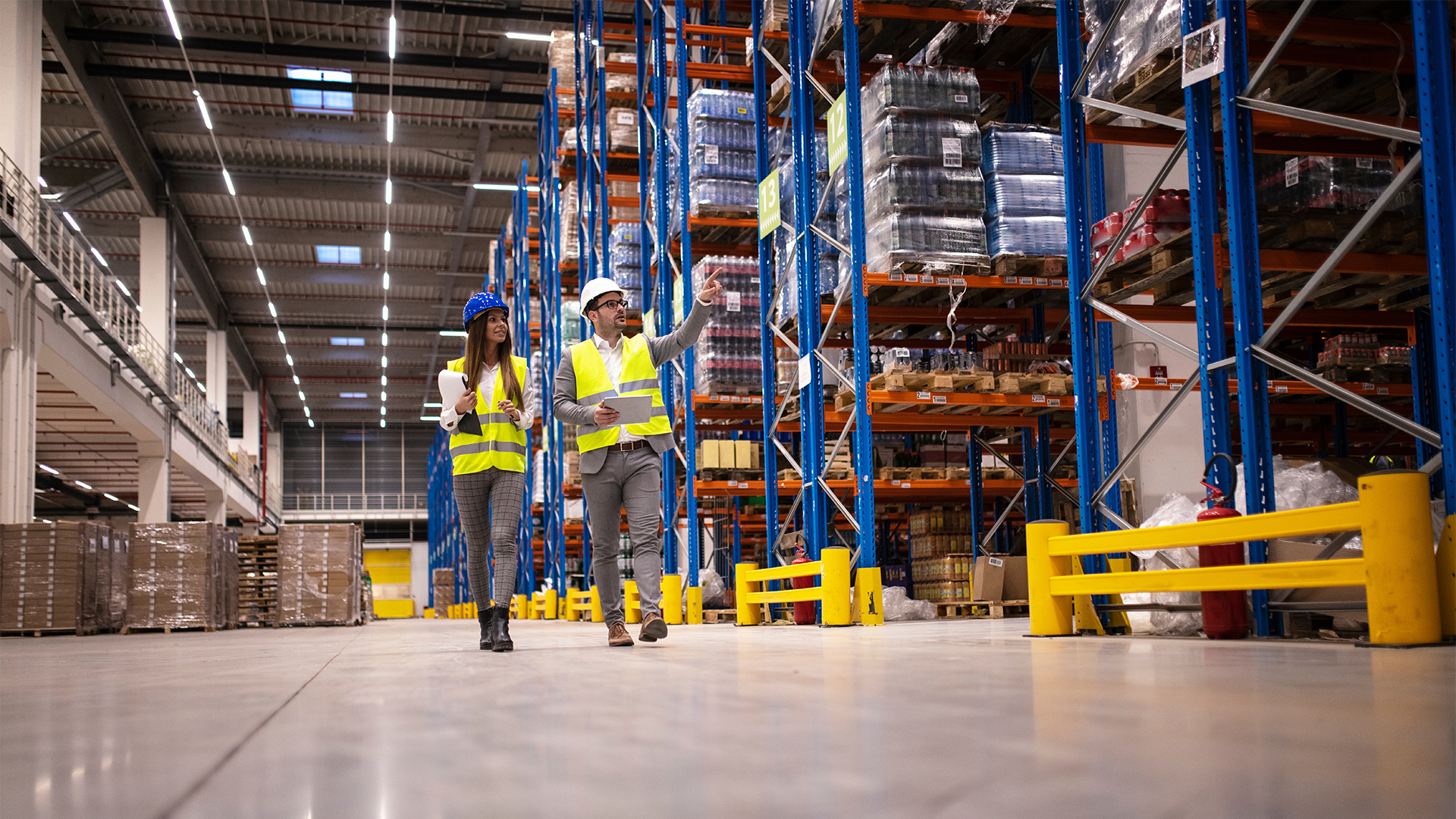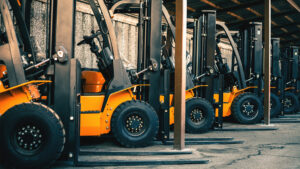Working in warehouses carries significant safety challenges, and the risk of injury is never far away. Despite major advancements in regulation and compliance, 138 workers were killed in work-related accidents in the UK in 2023/24, with falls from height (50), struck by moving vehicles (25), and struck by moving objects (20) accounting for almost 70% of these fatalities.
Now, forklift specialists, PHL, are highlighting the top 10 ways warehouse operators can enhance safety in the workplace and make buildings safer. Not only does accident prevention protect workers’ lives, but it also saves employers valuable time and money.
From wearing the right personal protective equipment (PPE) to providing essential training, discover how taking the right precautions can help prevent accidents and improve general warehouse safety.
1. Wear Appropriate Personal Protective Equipment (PPE)
PPE plays an essential role in warehouse safety. Warehouse operators are legally obliged to ensure workers are provided with the correct PPE when performing tasks both inside and outside the storage space.
High-visibility clothing, hard hats, safety boots, gloves, and eye and ear protection are common examples of warehouse PPE. Given it is often a worker’s last line of defence when performing a hazardous task, PPE is vital to achieving greater levels of safety in a warehouse setting. PPE can come in all different styles and shapes, so it is best to check with your company.
2. Provide Forklift Training
Warehouses rely on forklifts to help with everyday tasks where heavy, bulky goods and materials are lifted, stored, and moved around. Like all heavy machinery, forklifts carry a risk of serious injury or even death, and an average of 27 people are killed in forklift truck accidents in the UK every year, while one in five workplace fatalities are directly caused by forklifts or similar industrial vehicles.
Staff should always receive full training so they can safely operate a forklift in the workplace. Not only is it a necessity for preventing accidents, it is a legal requirement under the UK’s Health and Safety Executive. Failure to provide adequate forklift training can even have fatal consequences and bring large fines and penalties for employers.
3. Conduct a Full Risk Assessment
A thorough risk assessment process should occur for all on-site warehouse activities that workers are required to perform. This will highlight all dangers and hazards that pose a significant risk of injury, and how they can be avoided.
Similarly, warehouse operators should also organise regular safety meetings to update staff about changes in compliance along with the latest site procedures. For example, this could involve isolating certain workers from dangerous areas in a warehouse where high-voltage electricity is present.
4. Display Health and Safety Signs
Safety signs should be clearly displayed and easy to read across various warehouse locations where there is an inherent risk of injury. This signage can be split into five different categories – mandatory signs, warning signs, prohibition signs, fire safety signs, and safe conditions signs – all of which must conform to UK Health and Safety (Safety Signs and Signals) Regulations.
Warehouse health and safety signage comes in bright, noticeable colours like yellow and blue. Not only does this send a strong and clear message to workers and visitors, but it also enhances health and safety awareness in the workplace. Whether it’s no-entry signs for pedestrians or caution signs for operating forklifts, these signs provide vital information about warehouse dangers and how to avoid them.
5. Avoid Working in Unsafe Areas
Workers should always be told about the dangers around them and only operate in areas of a warehouse where robust safety measures are in place.
For example, working below high stacking units or a loaded forklift truck carrying heavy loads poses a significant safety risk and should be avoided. Similarly, workers should avoid working from heights where guard rails or safety ladders are missing, or where full risk assessment protocols haven’t been followed.
6. Enforce Strict Site Rules
Warehouse managers should lay down strict site safety rules. For example, forklifts should always be operated in line with standard safety regulations and an employer’s specific warehouse conditions to reduce the risk of injury.
Speed limits should be always enforced, while driving should be restricted to clearly defined aisles, paths, roads, and marked surfaces. Additionally, forklift operators must pay attention to warning signs of low ceilings, loading bays, and dangerous exclusion zones, while giving way to other vehicles. The edges of ramps, bays, and docking areas should also be clearly marked with high-visibility materials so operators can avoid them.
7. Operate Vehicles with Extreme Caution
Forklift trucks should always be operated with extreme caution in any warehouse setting. Drivers should take corners and doorways slowly, especially when visibility is limited, and use the horn to warn other workers of their presence.
Maintaining a safe distance from other forklifts and warehouse vehicles also reduces the risk of injury, as does observing a safe stopping distance. Similarly, users should position a load as low as possible to gain a clear view of what’s ahead. Sometimes it may also be necessary to drive the forklift in reverse to improve visibility, except when navigating ramps.
8. Take Extreme Care with Heavy Loads
Unsafe loads are one of the main causes of warehouse accidents. Loads that are too heavy, unsecured, unbalanced, or stacked too high cause forklift trucks to tip over, putting the operator and others at risk of injury.
A safe load should always be tilted slightly back toward the vehicle and the forks should be set low when in motion. Loads should be spread across both forks of the truck and stacked safely with straps and secure bindings. Forklift trucks should never be overloaded, and operators should never exceed the maximum capacity when in charge of a vehicle.
9. Introduce Anti-Slip Solutions
Falls from a height remain the most common type of fatal accident in the workplace. They were responsible for the deaths of 50 adult workers in the UK in 2023/24 alone, double the number of fatalities caused by being struck by a moving vehicle.
Warehouse managers can reduce the chance of injuries to workers from slips, trips, or falls from a height by implementing robust safety measures such as anti-slip grating and sheeting, harnesses, and guardrails in high-risk areas and locations.
10. Report Safety Concerns Immediately
Warehouse staff should report a problem or health and safety concern to their manager immediately. If there’s been a near miss or equipment appears faulty, inform the supervisor and fill in an incident report to avoid it happening again.
Every warehouse should have a clear incident reporting process, and bosses can only address work-related concerns when they are given the right information. Reporting site problems as soon as they arise will also lead to a quicker resolution and avoid potential accidents.
Ultimately, warehouses by their nature can be dangerous places to work, but many accidents are avoidable with the correct health and safety measures in place. From providing staff with essential PPE to enforcing strict site rules, there are many actions warehouse operators can take to improve safety in the workplace and reduce the risk of injury.






